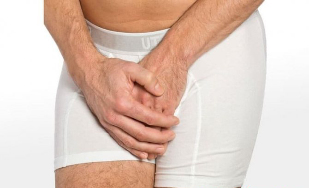
Male prostatitis is an inflammation of the male prostate gland. This is a relatively common condition in men with pain associated with emptying the bladder (urination) and ejaculation. Doctors differentiate between acute and chronic prostatitis. Treatment and prognosis depend on the form and cause of prostatitis. Read all about prostatitis here.
Prostatitis: description
Prostatitis (inflammation of the prostate gland) is an inflammation of the human prostate gland. The prostate gland is located just below the bladder and is about the size of a chestnut. It surrounds the first part of the urethra and extends to the so-called pelvic floor, made up of muscles.
The prostate gland produces secretions including PSA (prostate-specific antigen) and sperm. PSA makes ejaculation thinner. Sperm is very important to sperm motility.Prostatitis mainly involves severe pain in the perineum and anus region. Additionally, symptoms such as frequency of urination, pain when urinating (urinating), and pain during ejaculation occur with prostatitis.The prostate gland is relatively common with inflammation. It is estimated that about 15% of men in Germany experience prostatitis once in their lifetime. The ability of the prostate gland to contract increases with age. Research shows that most cases are between the ages of 40 and 50.
Prostatitis syndrome
At the same time, a wide understanding of the term prostatitis emerged in medicine. In the so-called prostatitis syndrome, a number of complaints in a person's pelvic region are aggregated, for which there is often no known cause. The term "prostatitis syndrome" summarizes the various clinical pictures:
- Acute bacterial prostatitis
- Chronic bacterial prostatitis
- Inflammatory and non-inflammatory syndrome of chronic pelvic pain ("Chronic bacterial prostatitis")
- Asymptomatic prostatitis
Acute and chronic bacterial prostatitis
Acute bacterial prostatitis (acute bacterial prostatitis). The bacteria travel through the bloodstream to the prostate gland or spread from an infection of the bladder or urethra to the prostate gland. Acute prostatitis is usually a serious general condition manifested by severe pain with urination, fever, and chills. Bacterial prostatitis is caused in about ten percent of cases.
Chronic prostatitis can develop from acute: if the inflammation of the prostate gland and bacteria is repeated in the urine, the so-called prostate manifestant (obtained by rubbingsqueezing prostate fluid) or during ejaculation, is observed for more than three months, then this is chronic inflammation. bacterial prostatitis. It is less rapid than acute prostatitis. Although chronic prostatitis causes pain when urinating and may feel a sense of pressure in the perineum, symptoms are usually not as severe as in acute prostatitis.
Chronic pelvic pain syndrome (bacterial prostatitis)
In most cases of prostate infection, bacteria that cannot be detected in the urine, prostate or ejaculation are the cause. The cause of prostatitis is still unclear. Doctors call this chronic pelvic pain syndrome (chronic bacterial prostatitis).
However, in such cases, leukocytes (leukocytes) are often found as a manifestation of inflammation in the prostate gland (chronic pelvic pain syndrome). To differentiate, this is another form of the disease in which no bacteria and white blood cells are found (chronic non-inflammatory pelvic pain syndrome). In general, chronic pelvic pain syndrome (bacterial prostatitis) is the most common form of prostatitis.
Asymptomatic prostatitis
In rare cases, asymptomatic prostatitis occurs. In this form of prostatitis, although there are signs of infection, it does not cause pain or other symptoms. For example, asymptomatic prostatitis is often found incidentally as part of fertility research.
Prostatitis: symptoms
Prostatitis can cause various symptoms of prostatitis. Although the symptoms of acute prostatitis can be very severe and cause severe discomfort, with chronic prostatitis they are usually a little milder. Not everyone affected necessarily has all of these symptoms, and the severity of symptoms may vary from person to person.
Acute prostatitis: symptoms
Acute prostatitis is usually an acute condition, with fever and chills. An inflamed prostate gland that surrounds the urethra also causes typical urinary symptoms. Urination causes burning pain (painful urination) and a marked decrease in urine flow (urinating) due to swelling of the prostate gland. Since the victim can only excrete a small amount of urine, they have a constant frequency of urinating and must go to the toilet often (urinating a lot). Other symptoms of prostatitis include bladder, pelvic pain, and back pain. Pain may also occur during or after ejaculation.
Chronic prostatitis: symptoms
Chronic prostatitis usually causes less serious symptoms than acute prostatitis. Symptoms such as fever and chills are often completely absent. Symptoms such as feeling tightness in the perineum or lower abdomen, dark ejaculation due to blood in the semen, or hematuria (blood in the urine) are typical of chronic prostatitis. Disorders of libido and vitality are also common chronic symptoms, often caused by pain during or after ejaculation. The symptoms of bacterial chronic prostatitis and chronic prostatitis (chronic pelvic pain syndrome) are not different.
How to realize?

The onset of prostatitis is rarely clearly recognized, as sometimes it is asymptomatic and its symptoms are individual for each patient and change over time.
These features include:
- A man has difficulty urinating in the toilet. Gland enlarges, canal that conducts urine shrink.
- The patient loses interest in sex. Difficulty with penis stimulation increases when trying to have sex. Orgasms are achieved when it's difficult, or weak, or completely gone.
- Burning of the urethra, itching in the anal layer.
- I often want to urinate, but I have to urinate in drops.
- The semen comes out quickly during intercourse with minimal pleasure.
- General fatigue, depression, irritability, aggression, increased anxiety.
In the morning, one feels overwhelmed, takes the initiative in life.
At the same time, at night, sometimes a prolonged erection and painful ejaculation occur spontaneously, not related to sexual intercourse.
Observing these phenomena, the patient calms down, believes he is healthy, from their point of view, matters related to their partner, their relationship. He is overcome by depression, which aggravates the development of the disease.
Ratio statistics
Prostatitis is one of the most common diseases of the male genital system in the world. According to various sources, it is observed in 60-80% of sexually mature men. According to official health statistics, over 30% of young people of reproductive age suffer from chronic prostatitis. In about a third of cases, it occurs in men over the age of 20 and under 40. According to WHO, urologists diagnose chronic prostatitis in every tenth of patients.
Complications of prostatitis
In addition to acute symptoms, prostatitis can lead to complications that complicate the course of the disease and prolong the healing time. The most common complication is an abscess of the prostate gland (especially in acute bacterial prostatitis). A prostate abscess is a purulent infection that usually needs to be opened and cleaned with an incision.
As another complication of prostatitis, an infection can be spread toNeighboring structures such as testicular or testicular crest (epididymitis, testicular inflammation). It is also suspected that chronic prostatitis is associated with prostate cancer development.
Prostatitis: Causes and Risk Factors
Prostatitis can have many different causes. Treatment and prognosis of inflammation depend on the cause of prostatitis.
Bacterial prostatitis: causes
Only ten percent of prostatitis cases are caused by bacteria from the prostate gland (bacterial prostatitis). The bacteria can enter the prostate gland through the blood (blood) or from nearby organs such as the bladder or urethra, where they can lead to an inflammatory response.
Escherichia coli (E. coli), which occurs mainly in the human intestine, is the most common cause of prostatitis. Klebsiella, enterococci, or mycobacteria can also cause prostatitis. Bacterial prostatitis can also be caused by sexually transmitted diseases such as chlamydial or Trichomonas infections and gonorrhea.
In chronic prostatitis, bacteria in the prostate gland have not clearly escaped to protect the human immune system. This allows bacteria to continuously penetrate the prostate gland. Antibiotics are relatively poor in prostate tissue, which could be another reason bacteria survive in the prostate gland.
Chronic pelvic pain syndrome: Causes
The exact cause of chronic pelvic pain syndrome is not fully understood. Scientists have come up with many theories, each of which seems plausible, but all of them have not been clearly proven. In some cases, genetic material of previously unknown microorganisms has been found in small pots. Therefore, the cause of the pelvic pain syndrome can be due to the microorganism that still cannot be cultured in the laboratory and is therefore undetectable.
Another possible cause of chronic pelvic pain syndrome is an impaired ability to empty the bladder. Due to the violation of the drainage system, the volume of the bladder increases, thereby putting pressure on the prostate gland. This pressure eventually damages the prostate tissue, causing inflammation.
Another possible cause is inflammation of the bladder tissue that can spread to the prostate.
It is also possible that nerves around the prostate are irritated causing pain by mistake. with the prostate.
Ultimately, it is also possible that an overactive immune system or a wrong redirect is causing chronic pelvic pain syndrome.
However, in many cases the cause of chronic pelvic pain cannot be clearly demonstrated. Then the doctors talked about idiopathic prostatitis.
Anatomical reason
In rare cases, prostatitis is caused by a narrow urinary tract. If the urinary tract is narrowed, urine will accumulate, and if it enters the prostate gland, it can also cause inflammation. This narrowing can be caused by a tumor or so-called prostate stones.
Doctors also suspect that dysfunction of the pelvic floor muscle may contribute to the development of prostatitis.
Mental reason
Recently, more and more psychological causes of prostatitis have been discussed. In particular, in the non-inflammatory chronic pelvic pain syndrome, it is very likely that there is a psychotic factor. The exact mechanism is still unknown.
Prostatitis risk factors

Some men are particularly at risk for prostate infection. These include, for example, men with compromised immune systems or suppressed immune systems (eg, by medication, immunosuppressive therapy). Additionally, underlying conditions such as diabetes can contribute to the development of prostatitis: high blood sugar in diabetics often leads to hyperglycaemia. Abundant sugar in the urine can create good conditions for bacteria to thrive, which can easily cause urinary tract infections to develop. In addition, the immune system is weakened in diabetes mellitus.
Another risk factor for developing prostatitis is bladder catheterization. Inserting the catheter through the urethra can cause small tears in the urethra and damage the prostate gland. In addition, as with any foreign body, bacteria can settle on the bladder and form what's called biofilm. As a result, bacteria can migrate from the urethra to the bladder and lead to prostate infection.
Prostatitis: examination and diagnosis
In the case of prostate problems, your family doctor or urologist is the right contact. The general practitioner can take a medical history (a history), but if you suspect that you have prostatitis, your doctor will refer you to a urologist. This performs a physical examination. If prostatitis is suspected, this is usually a digital rectal examination. However, this study did not provide clear evidence for prostatitis, but only confirmed suspicion. Laboratory tests may be performed to detect bacterial prostatitis. If no specific cause is found, treatment is also performed in reasonable suspicion of prostatitis.
Case history
Typical questions when recording a history (history) might be:
- Do you have pain while urinating?
- Where exactly do you feel the pain?
- Do you have back pain?
- Have you noticed a change on ejaculation?
Digital rectal examination
Since the prostate gland is directly adjacent to the rectum, it can be felt along the rectum. This digital rectal exam is performed on an outpatient basis and is free from anesthesia, and is usually painless. The patient was asked to lie down with a leg curled position. Using a lubricant, the doctor then slowly inserts a finger into the anus and scans the prostate and surrounding organs (palpation). He examined the prostate's size and sensitivity to pain: the inflamed prostate was greatly enlarged and very sensitive to pain.
Lab test
Urine analysis is performed in most cases to identify possible pathogens. The standard method is called the four-glass sample. Here Ersturin, Mittelstrahlurin, Prostataexprimat and Urin were examined after prostate massage. As Prostateexprimat is known by doctors as prostate secretions. This is done by a doctor by gently applying pressure on the prostate gland, such as by palpation. Ejaculation may also be checked for pathogens and inflammatory markers.
Research more
An ultrasound of the rectum (ultrasound) can be used to determine the exact location of the inflammation and how widespread it is. An important goal of the study is also to exclude other diseases with similar symptoms (differential diagnosis).
Urine flow measurement (uroflowmetry) is taken to rule out that current urinary drainage problems are caused by a narrowed urethra. Patients urinate in a special funnel, which measures the amount of urine per unit time. A normal urine flow is 15 to 50 milliliters / second, while a urine flow of 10 milliliters or less has a very high chance of urethral obstruction.
Prostatitis: PSA measurement
Elevated blood levels of PSA (prostate-specific antigens) are often considered a marker of prostate cancer. However, even with prostatitis, the PSA level in the blood can increase significantly. If the readings are significantly higher, tissue sampling (biopsy) is often performed and examined in a laboratory to safely rule out prostate cancer.
Prostatitis: Treatment
As with other diseases, the treatment of prostatitis and the length of treatment depends on the cause.
Drug
Acute bacterial prostatitis is treated with antibiotics. In mild cases, the dose of antibiotics is sufficient for about ten days. For chronic prostatitis, the drug should be taken for a longer time (about four to six months). Even if symptoms have subsided, in all cases should continue to take antibiotics as prescribed by the doctor. This prevents recurrence and reduces the likelihood of recurrence (recurrence).
Asymptomatic prostatitis can also be treated with antibiotics.
If you have chronic bacterial prostatitis (chronic pelvic pain syndrome), then antibiotic therapy is usually ineffective. In chronic pelvic pain syndrome, although there is no evidence of a pathogen, an antibiotic test is done because it can sometimes improve. However, antibiotic therapy is not recommended for chronic non-inflammatory pelvic pain syndrome.
Other treatments for bacterial chronic prostatitis are so-called 5α-reductase inhibitors and herbal (herbal medicines). If no improvement is achieved, drug treatment will be complemented by physiotherapy. It recommends physical therapy, pelvic floor exercises or regular prostate massage. Additionally, microwave thermotherapy can stimulate tissues to increase blood flow and relieve pain.
In addition, symptomatic therapy can help relieve the acute symptoms of prostate infection. Pain relievers may be prescribed for severe pain. In addition, the heating pads and heating pads on your back or lower abdomen can help relax your muscles. Medications often help relieve pain caused by prostatitis.
Home remedies like cooking rye or eating pumpkin seeds with soft shells can also help reduce the symptoms of prostatitis. Other tips include regular pelvic floor exercises, not using a sharp bike saddle, and not drinking beer, meat, fat and sugar.
Treatment of complications
If, in the context of the disease, a major urinary obstruction occurs, prostatectomy can be helpful, since residual urine is always at high risk of urinary tract infection.
If the inflammation produces pus in the prostate gland (abscess), the pus should be cleaned with an incision. The entry is usually the rectum.
























